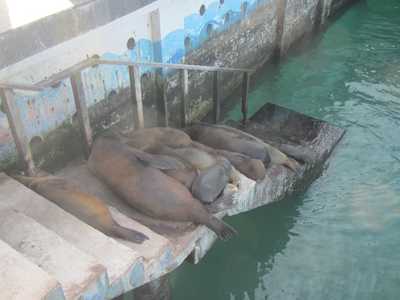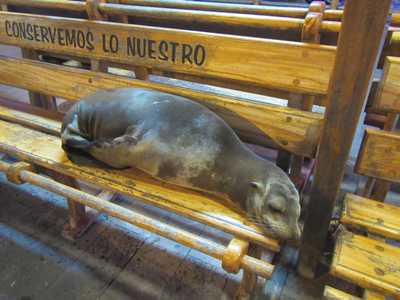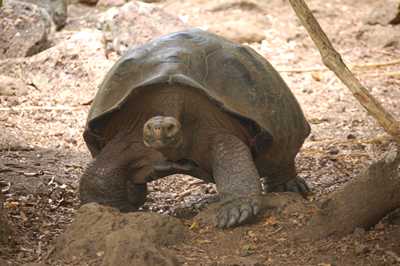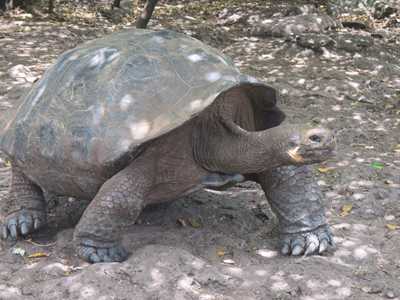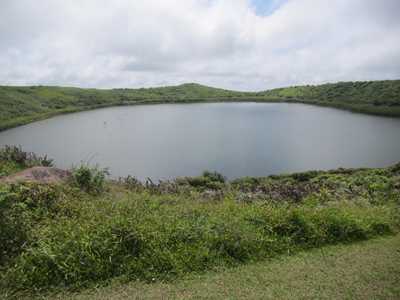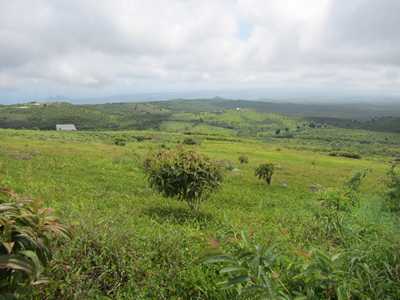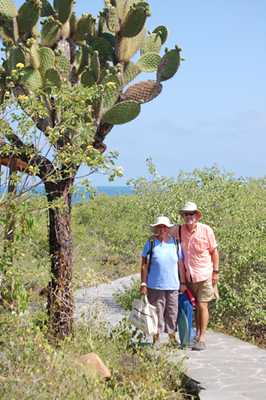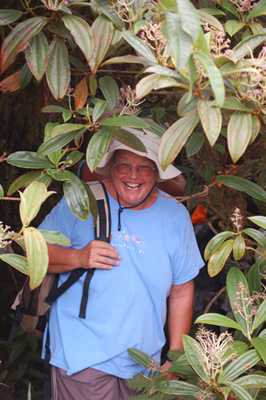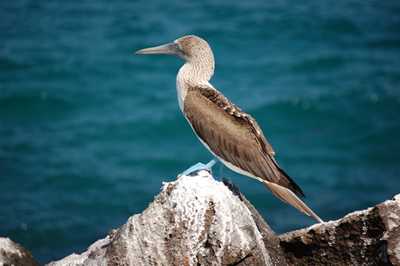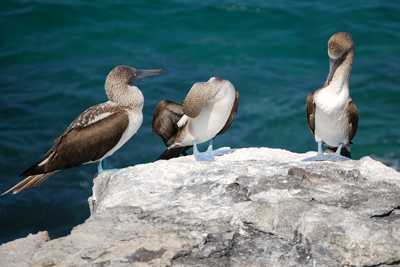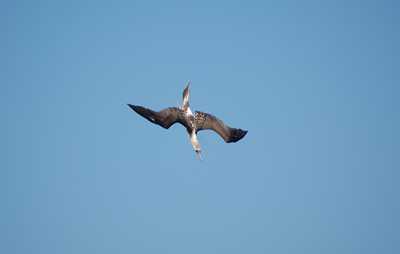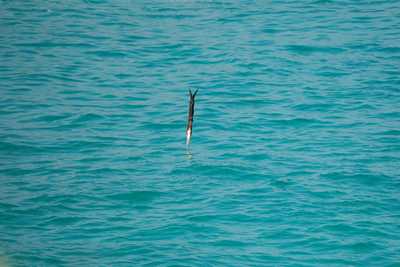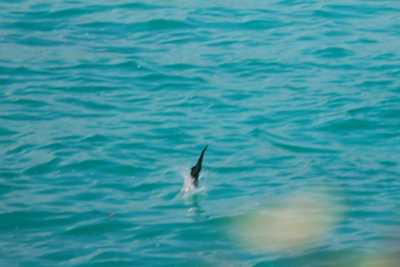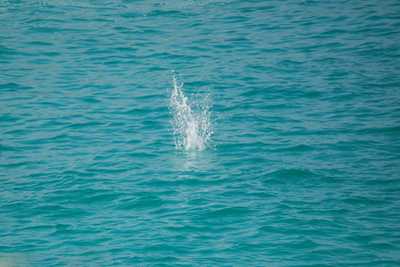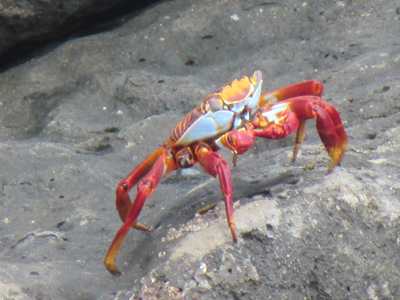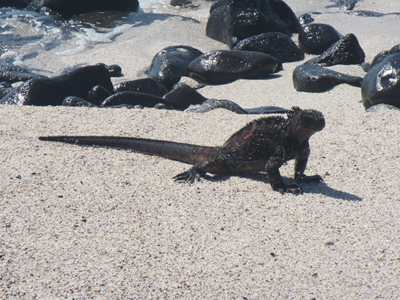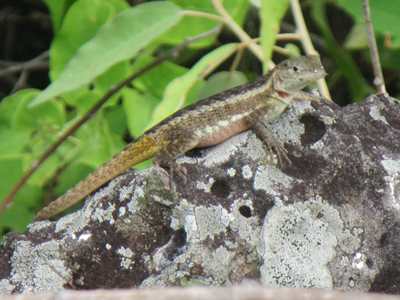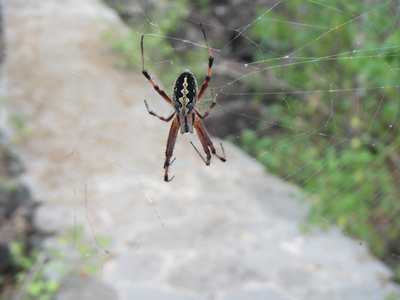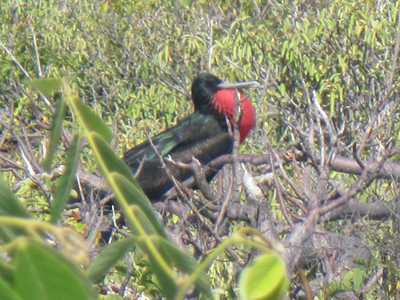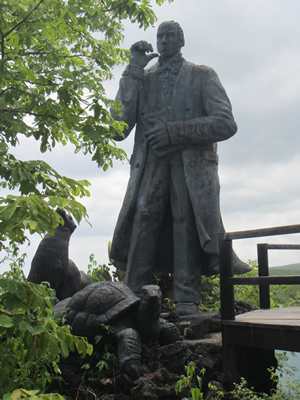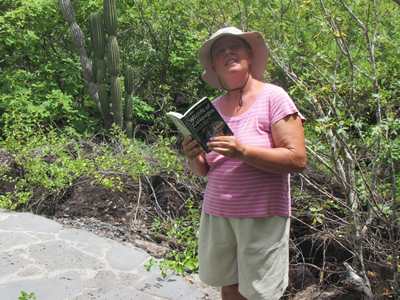Giant tortoises, Darwin's finches and more....

Wednesday 10th April 2013 We have spent the last week exploring San Cristobal, which is one of the bigger and older islands in the archipelago and the volcano here is inactive. 96% of the Galapagos Islands are National Park (the remaining 4% given over to agriculture to feed the inhabitants of the islands). The Ecuador government restricts the numbers of visitors and visiting boats to the islands in an attempt to maintain/restore the ecosystem, and movement around the island involves payment of $100 each National Park fee (one-off payment) and $100 per day hire of an official National Park Guide (which we shared between a group). There are also a couple of trails we are allowed to follow unaccompanied. So far it has been worth every penny. We took a tour inland, a boat tour (mad, when we have our own boat but it is not allowed to leave the port of entry to cruise the waters independently – to do so we would have to have a National Parks Guide on board at a rate of $200 per day!) We have hiked the allowed trails alone and visited the Galapagos Interpretation Centre. We have learnt from the guides about the attempts to eradicate introduced species which are threatening the endemic species – blackberry and guava plants are the worst problem as they are impossible to control. Goats have been eradicated on most islands as they were very destructive – rats have proved more difficult to control. We have seen some of Darwin’s finches and giant tortoises for which the islands are so famous, as well as sea lions, lava lizards, blue-footed boobies, frigate birds, hammer-head sharks, turtles, marine iguanas, Sally Lightfoot crabs, zig-zag spiders and other creatures we could not identify.
Sea lions make themselves comfortable at the dock... ...and on the benches!
Giant tortoises – rules say we mustn’t get closer than 2 metres... ...so no chance of getting a person in the picture to show their size.
El Junco – the only fresh water lake in the volcano caldera. San Cristobal has a lot of vegetation.
Prickly pear cacti grow hard trunks as a defence. Vegetation is lush around the lake. The blue-footed boobies were fascinating to watch when they were feeding. They appear to be able to spot their prey under the water from quite a distance up, and zoom into a dive to catch it. Watching a group of them all diving is quite a spectacle.
Blue-footed boobies.
A blue-footed booby starts to dive.... ...folds its wings just before hitting the water...
...hits the surface at quite some speed.... ...and with quite a splash. (Photos by Steve.)
Sally Lightfoot crab – so colourful. Marine iguana
Lava lizard. Zig-zag spider.
Male Great Frigatebird.
Charles Darwin statue. Me, trying to identify a finch. |
